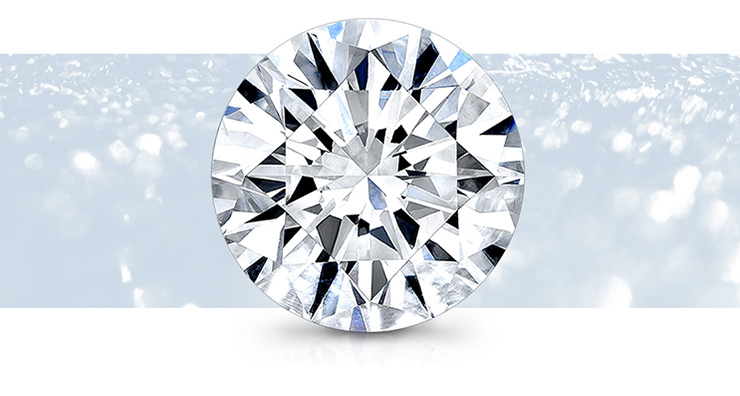Understanding the parts that make up a diamond is as important as knowing the 4 C's. Think of these elements as engine parts that power the stone. A fine car requires an efficient, powerful engine to propel it forward and this is also true for a diamond. The light-emitting engine that we call the "cut", gives each diamond a unique blueprint of its beauty.
Let's start with the geography of a diamond. What each section is called and how they relate to one another.


TABLE PERCENTAGE
A measure comparing the surface area of the table and the diamond’s overall diameter (measured from one side of the girdle to the other). This ratio is of upmost importance when determining cut grade. A table percentage that is too small means a taller crown and an overly round appearance. If the ratio is too large the crown is shorter which causes a flattened look. In either case light escapes a stone before it reaches your eye which means a far less scintillating stone.


DEPTH PERCERTAGE
The ratio of a diamond’s depth and its overall diameter. Stones with optimal light performance fall between depth percentages of 54-66%.


Polish
Term used to define the surface condition of a diamond’s facets. Polish features are located on the surface and do not penetrate into the diamond under 10X magnification. Although a diamond’s hardness can produce incredible luster, a diamond crystal does possess a natural grain. This grain, similar in some aspects to wood, can produce natural variations during the polishing process. The goal is to produce an even, highly polished facet that will not affect the light performance of the diamond.


SYMMETRY
Symmetry is determined by how well the various facets are aligned. Do they meet where they are mathematically intended to? Is the top of the diamond (table) properly centered or slightly off to one side? Is the bottom "point" (culet) of the diamond exactly in the center or disproportioned? These are just a few of the characteristics considered when establishing symmetry. Each of these questions must be answered to arrive at an overall opinion of a diamonds proportions. Proper proportions mean a more perfect cut leading to vibrant, rich sparkle.


Fluorescence
Fluorescence is the visible reflection emitted when a diamond is exposed to ultraviolet (UV) light. Approximately 1/3 of all diamonds exhibit some degree of fluorescence and Long-wave UV is an essential component of daylight. The most common fluorescence is blue. The diamonds below appear the same under normal lighting conditions (bottom row) but when exposed to UV (top row) this characteristic becomes pronounced. In rare cases of extreme fluorescence a diamond will appear slightly hazy, but more often fluorescence visibly improves a stone’s appearance in daylight.
NONE

FAINT

MEDIUM

STRONG

VERY STRONG





